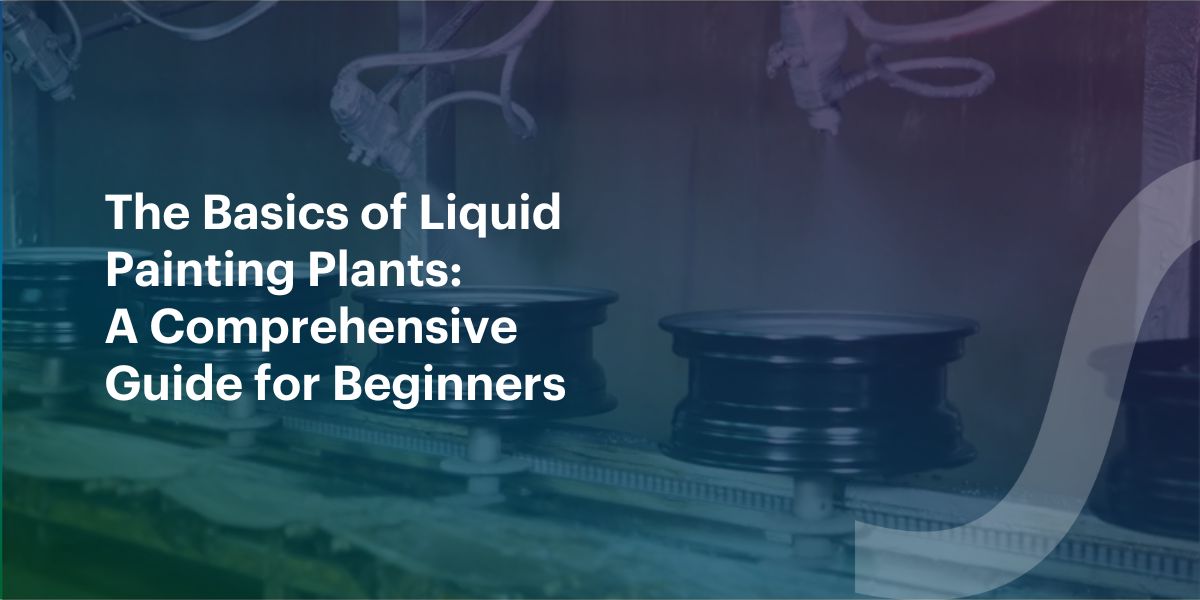Liquid painting plants are essential for applying high-quality finishes to various products in industries such as automotive, furniture, and appliances. If you’re new to the world of liquid painting plants, this comprehensive guide will provide you with the fundamental knowledge you need to understand the process, equipment, and key considerations involved. Let’s dive into the basics of liquid painting plants and gain a solid foundation for further exploration.
Understanding Liquid Painting:
An Overview Liquid painting is a widely used method in industrial applications to apply a protective and aesthetically pleasing finish to products. It involves the application of liquid paints or coatings onto surfaces using various techniques. In comparison to other finishing methods like powder coating, liquid painting offers versatility and the ability to achieve specific desired effects. It is crucial to start with proper surface preparation, ensuring optimal adhesion and the longevity of the finish.
Liquid Painting Plant Components
A liquid painting plant consists of several key components that work together to facilitate the painting process. The main components include a paint booth, where the painting occurs, spray machine that apply the paint, and curing ovens that facilitate the drying and curing of the applied coatings. Additional auxiliary equipment, such as filtration systems and ventilation units, contribute to a clean and safe working environment within the plant.
Types of Liquid Paints and Coatings
There are different types of liquid paints and coatings available for various applications. Solvent-based and water-based formulations are common options. Solvent-based paints use organic solvents as a carrier for the pigments and resins, while water-based paints use water as a carrier. Different liquid coating materials, such as enamels, lacquers, and polyurethanes, offer varying properties and performance characteristics. The choice of paint and coating depends on the application requirements and desired finish quality.
Surface Preparation Techniques
Surface preparation is a crucial step in the liquid painting process. It involves cleaning, degreasing, and, in some cases, sanding the surface to ensure proper adhesion of the paint. Pre-treatment methods, such as phosphating, etching, and priming, are employed to enhance adhesion and corrosion resistance. Proper surface preparation is essential for achieving high-quality and long-lasting finishes.
Paint Application Methods
Various paint application methods are used in liquid painting plants. Manual spraying, automated systems and electrostatic application are common techniques. The choice of application method depends on factors such as the size and complexity of the product, the desired finish quality and the production volume. Operators employ spray machines, nozzles, and control systems to achieve uniform and consistent coatings.
Curing and Drying Processes
After applying the paint, you must cure and dry it to achieve the desired finish durability and performance. Curing involves subjecting the coated product to controlled heat in curing ovens, allowing the paint to chemically react and form a hard and durable finish. The duration and temperature of the curing process depend on the specific paint and coating materials used.
Quality Control and Inspection
Quality control is a vital aspect of liquid painting plants to ensure consistent and high-quality finishes. Visual inspection, adhesion testing, and color matching are common quality control measures. Coating thickness measurement and monitoring are also important to meet the required specifications. Regular maintenance and calibration of equipment are necessary to maintain consistent results.
Safety Considerations in Liquid Painting Plants
Safety is paramount in liquid painting plants due to potential hazards associated with chemicals, flammability risks, and airborne particles. Personal protective equipment (PPE), such as gloves, respirators, and protective clothing, should be used. Proper ventilation systems are essential to maintain a safe working environment. Adherence to safety regulations and guidelines is crucial to prevent accidents and protect workers’ health.
Leading Manufacturer of Liquid Painting Plant
Statfield stands out as a market leader in the liquid painting industry. With their expertise, cutting-edge technologies, and commitment to excellence, Statfield has established itself as a trusted partner for businesses seeking top-notch liquid painting plants. Whether it’s their comprehensive range of equipment, focus on eco-friendly practices, or dedication to customer satisfaction, Statfield has consistently demonstrated why they are a preferred choice in the market. By partnering with Statfield, businesses can confidently navigate the complexities of liquid painting and leverage the expertise of a market leader to achieve exceptional results.
FAQs of Liquid Painting Plant
It’s a facility designed to apply liquid paint or coatings on different products using spray guns. It includes paint booths, spray systems, curing ovens and ventilation systems.
- Paint Booth – A clean area for painting
- Spray Systems – Manual or automatic spray guns
- Curing Ovens – For drying and hardening paint
- Ventilation & Filters – For clean air and safety
- Paint Kitchen – For mixing and managing paints
- Conveyors – For moving parts through the process
- Water Wash Booth – Uses water to trap overspray
- Dry Back Booth – Uses filters, good for low paint use
- Pressurized Booth – Controls temperature & humidity
- Large Component Booth – For oversized items
- Side Draft Booth – For small parts
- Down Draft Booth – For large/heavy items
Automotive, furniture, appliances, aerospace, electronics, industrial machinery and metal fabrication.
- Surface Prep – Cleaning & priming
- Paint Application – Using spray guns
- Curing/Drying – Heat or air drying
- Quality Check – Testing finish, adhesion & durability
- Solvent-Based Paints – Durable, fast drying
- Water-Based Paints – Eco-friendly, low emissions
- Special Coatings – Enamels, lacquers, polyurethanes
Size of parts, production volume, quality needs, speed and environmental safety.



